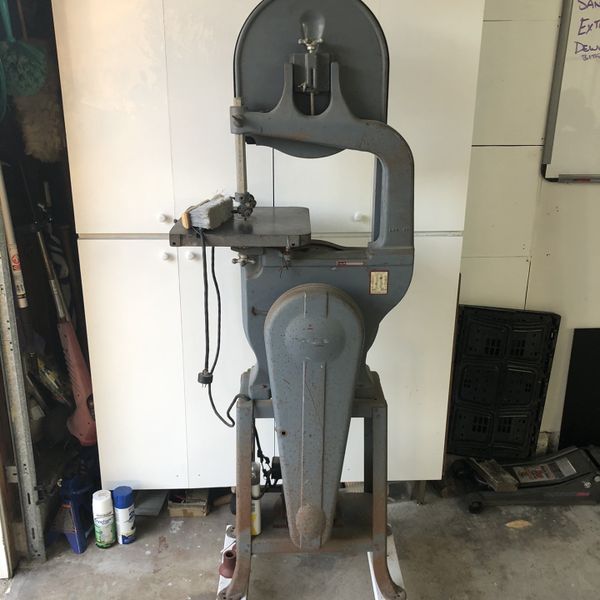


The new welding method was merged with new steel alloys, and advanced tempering techniques, which let Perin create the first modern band saw blade, instantly making the saw design much more feasible and functional. She eventually applied for a patent in 1846, and quickly sold the rights to manufacturer A. Unfortunately, these older band saws were mostly impractical because the technology did not yet exist that could create lasting and durable blades that held up to the rigorous use.Ĭonstant flexing of the blade over the motor’s wheels caused it to fail more often than not.Ī few decades later, a Frenchwoman named Anne Paulin Crepin created a welding technique that enables better blade building for this type of saw. The general idea of the band saw can be traced back to 1809 when a man named William Newberry received a British patent for the idea. Like most saws, the band saw’s history goes back many years, and went through numerous changes and ideas before what we have now. The saw’s main advantages include highly uniform cutting action from an evenly distributed tooth load, and the ability to cut irregular or curved shapes like you can work with a jigsaw, in a more controlled way.Ī motor is used to power the saw, and most models contain some adjustments that let you expose more of the saw blade for bigger workpieces, adjust speeds, and allow for mitered and angled cutting depending on the saw’s table surface and features as well.īand saws come in a variety of sizes and types, which we’ll touch on further down. The small size of the blade allows for detailed, intricate cuts.īand saws are mainly used in woodworking but are also very useful in metalworking and lumbering. The blade comes up through the flat surface of the table, which is where the workpiece is moved into the saw to create cuts. While the blade is continuously moving, only a small part of it is exposed in the cutting area. The blade is more of a ribbon, as it is constantly rotating along the wheels, similar to a cassette tape.
WHAT YEAR IS MY DELTA MILWAUKEE BAND SAW HOW TO
That’s not to say that these are the only saws that can make intricate cuts, but they are arguably the easiest and most effective to use, regardless of your skill level.Īnd now, thanks to better technology and progression, band saws are not only available in the large floor-based models you may remember from your woodshop class in high school.Īre you on the fence about whether or not you need a band saw in your own shop or garage? This guide will teach you all the vital information you need to know about band saws, including various types, what they’re best for, how to use them, etc.īy the end of this, you should be a lot more up to speed on all the things a band saw can use, and why you might need one for your uses.Īs always, let’s first define what exactly a band saw is, and take it from there.Īt its most simplistic definition, a band saw is a saw with a long blade that consists of a continuous band of metal with saw teeth, stretched between two or more wheels. What a band saw is certainly one that most everyone can agree falls into the “essential” category, especially if you’re planning on doing any cuts that go beyond just the basic type.Ī band saw offers astounding versatility when it comes to making any kind of irregular cut. If you’re someone who has even the slightest amount of experience or knowledge with woodworking, you already know that there are numerous saw types out there, each with its own advantages and uses.


 0 kommentar(er)
0 kommentar(er)
